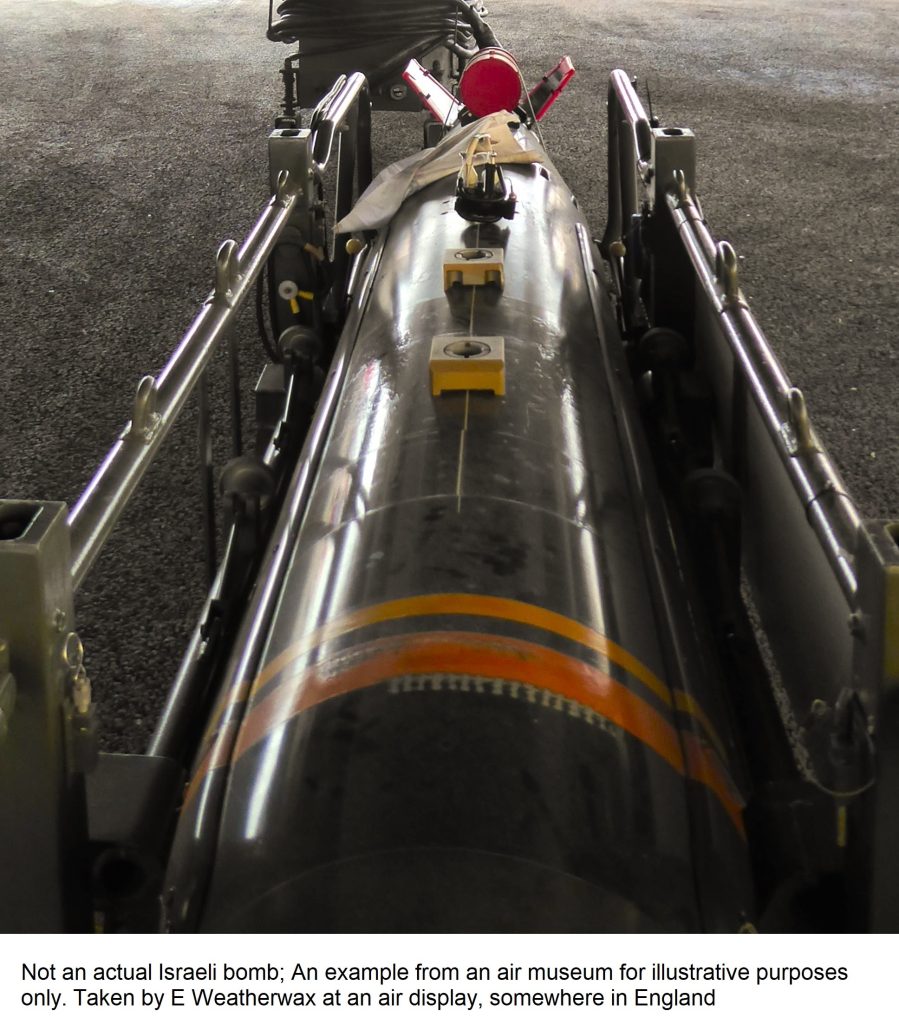By Eric Rozenman
Unlike Ukraine, Israel is presumed to possess nuclear weapons. Unlike Israel, Iran is presumed not to possess nuclear weapons, not yet. But according to the United Nations’ International Atomic Energy Agency, it is well on its way. The US and Israel are to hold an overdue meeting on the threat in coming days.
Debate over when Israel goes to war against Iran’s top proxy, Hezbollah, which fires constantly on Israeli towns and bases across the border from Lebanon, often ignores this temporary imbalance in Jerusalem’s favor. Could Jerusalem’s security establishment be minimizing consideration of nuclear options, as it minimized the Hamas threat from the Gaza Strip before the group’s invasion and massacre last October 7?
“War Between Israel and Iran Is Inevitable” blared the headline over a Wall Street Journal Op-Ed late last month. And the sooner the better, according to author Seth Cropsey, a former deputy undersecretary of the Navy.
He notes Iran’s goal, using proxies Hamas, Hezbollah and others “is to destroy Israel as a uniquely Jewish state through a strategy of attrition.” The more time Tehran gets, the greater U.S.-Israel tensions become over Gaza and the West Bank (Judea and Samaria), the more intense international pressure on Jerusalem grows, and the bigger the burden of constant mobilization on the military and economy.
“The Jewish state is small and vulnerable,” Cropsey says. But relying on American weapons resupply and deterrence of other great-power interventions “has become a straight-jacket.” To break out, “there should be rapid action in the north, with or without American approval. It should take the form of a large-scale air campaign ….”
Israel’s tiny geography (260 miles north to south, rarely 35 miles east to west) puts its citizens at heightened risk—at least 60,000 have been evacuated from near the Lebanese border under Hezbollah’s bombardment. The Iranian-funded, armed and trained U.S.-designated terrorist movement fields up to 50,000 gunmen, many veterans of salvaging dictator Bashir al-Assad in Syria’s civil war. It also possesses an estimated 100,000 to 150,000 missiles and rockets, perhaps 10 times more than Hamas on October 7, some precision-guided, plus drones.
The longer Jerusalem hesitates, the more opportunity Hezbollah gets to hit Israel’s comparatively few airbases even before Cropsey’s recommended first strike. The Shi’ite “Party of God” certainly would attempt to do so between an opening air assault and necessary second wave. Second stage attacks should target not only Tehran’s surrogates in Lebanon and Syria, Cropsey says, but also Iranian command nodes. Israeli F-15s, F-16s and F-35s can remain airborne only a relatively short time before they must return to base to refuel and rearm.
Defense or Offense?
 Israel’s air defenses rank among the most sophisticated in the world. Supported by U.S. and U.K. forces, supplemented by Saudi Arabia, Jordan and the United Arab Emirates, those systems stopped most of the more than 300 missiles and drones Iran fired at Israel on April 13.
Israel’s air defenses rank among the most sophisticated in the world. Supported by U.S. and U.K. forces, supplemented by Saudi Arabia, Jordan and the United Arab Emirates, those systems stopped most of the more than 300 missiles and drones Iran fired at Israel on April 13.
Impressive, but in the war of attrition Iran wages against Israel, one Iron Dome interceptor (used against short-range threats) reportedly costs between $50,000 and $100,000; Hamas’ homemade Qassam rockets can be assembled for between $300 and $800. At some point, quantity can bankrupt quality.
Joint Chiefs of Staff Chairman Gen. C. Q. Brown cautions that it would be more difficult for the U.S. to assist Israel against Hezbollah than it was to help block Iran’s April attack. Given the distances involved, there was much more time to intercept Iranian missiles and drones than there would be against Hezbollah’s weapons.
Brown also urges Jerusalem to consider “second order effects” of striking Iran’s most effective surrogate. These include heightened danger to American Middle East forces and the likelihood Iran would back Hezbollah more strongly than it has Hamas. Brown did not mention that the White House hopes to avoid expanded Middle East warfare especially before November’s election.
Tamir Hayman, a former head of Israeli military intelligence and now leader of the country’s Institute for National Security Studies agrees with Cropsey that war with Hezbollah is inevitable. But Israel is not ready and lacks full U.S. approval. “Better to do it a couple years from now,” he is quoted as saying in another Wall Street Journal Op-Ed, this one by the paper’s Elliot Kaufman on July 4.
Israel may not have a couple years to prepare, retired Brig. Gen. Amir Avivi told Kaufman. As the Israelis get ready, so will Hezbollah and Iran.
Difficult as it is for Israel to deal with Hezbollah, or any other Iranian proxy now, imagine them under Tehran’s nuclear umbrella. Russia’s recurrent threats to use tactical nuclear weapons in its war to destroy Ukraine limits Kiev’s use of Western arms.
Iran’s war to destroy Israel squeezes the Jewish state on three fronts: the south from Hamas in Gaza, north with Hezbollah in Lebanon, and east with Iranian weapons flowing through Syria and Jordan to West Bank (Judea and Samaria) terrorists. As soon as Iran gains nuclear weapons, this dire situation could become untenable. To reestablish deterrence before then, which is to say now, Israel must consider its own nuclear options.
First published in the Times of Israel







